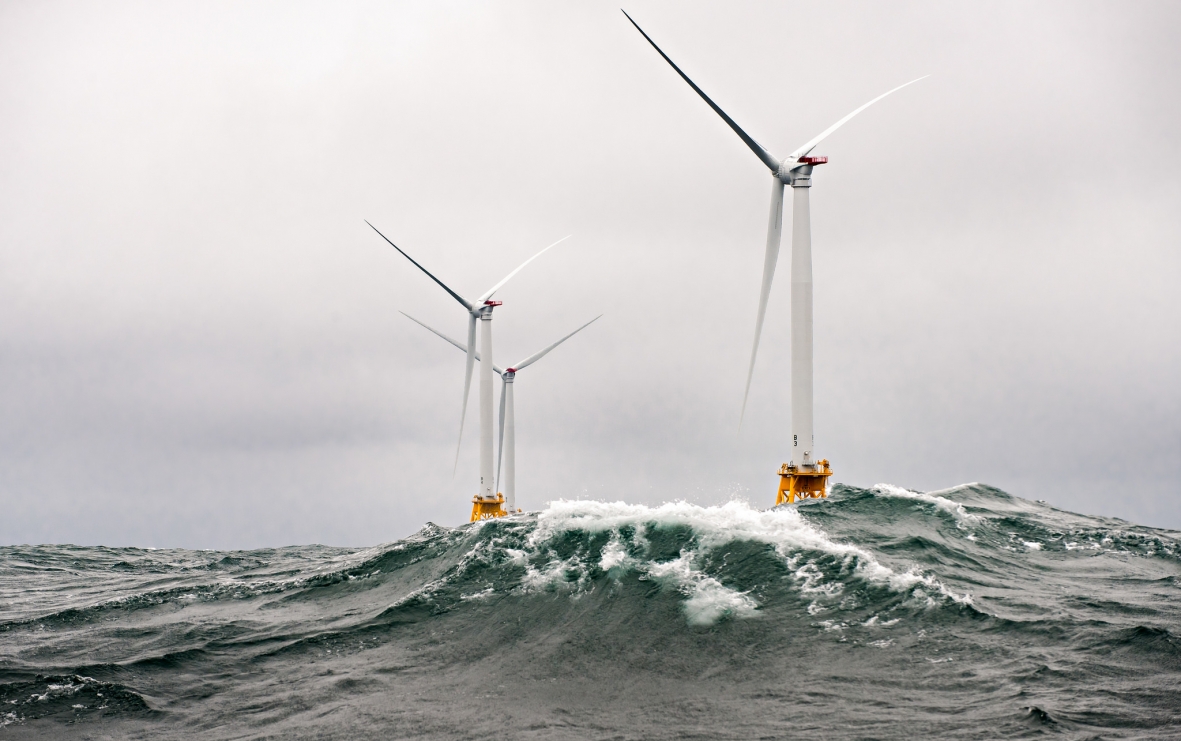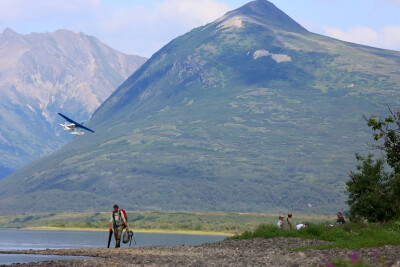An economic study commissioned by commercial fishing advocates says predictions of future U.S. jobs from offshore wind energy are overstated.
The report contends skilled workers from overseas and specialized foreign-flag vessels will be needed for years to build offshore wind turbine arrays. It’s a sharply contrasting picture to wind developers and supporters, who are backing plans for U.S.-built installation vessels and worker training programs.
“Although offshore wind projects have a potentially beneficial role to play as part of U.S. energy portfolio, a careful investigation of the employment impact shows a surprisingly low number of positions at the more permanent level of actual operation and maintenance of the offshore wind electricity,” concludes the paper from Georgetown Economic Services, a subsidiary of Kelley Drye & Warren, a Washington, D.C. law firm that has long worked with commercial fishing groups.
“In addition, the bulk of the jobs will be created overseas rather than here at home, and total domestic employment in manufacturing and construction is small when compared with employment in the manufacture of conventional equipment for power generation,” the report says. “The claim that the huge investments on offshore wind would provide significant job and economic benefits in the U.S. has been grossly inflated.”
The paper is a sharp contrast to predictions from wind energy boosters and their political allies, especially in the Northeast and Mid-Atlantic where governors and lawmakers see offshore wind as both solving long-term energy needs and providing an economic boost from new jobs and port activity.
The Georgetown Economic report addresses projections for East Coast wind projects generally, but takes specific aim at Vineyard Wind, the project for southern New England waters that is the subject of a federal environmental impact statement that will be finalized late this year. The Responsible Offshore Development Alliance, a coalition of fishing groups and communities, commissioned the study to address concerns raied by New England fishermen.
The paper notes that study issued in March 2020 by the American Wind Energy Association estimated that developing 30 gigawatts of offshore wind power could support up to 83,000 direct and indirect jobs by 2030.
“In addition, an economic impact study for the Vineyard Wind offshore wind facilities in Massachusetts estimated that the construction of 1,600 MW of offshore wind power would generate 3,171 direct employees, 3,618 indirect employees, and 3,063 induced employees,” Georgetown Economic analysts wrote.
“Unlike traditional power plants, wind farms are built quickly, usually in a year or less, and many construction, installation and manufacturing positions are short term,” they wrote. They note that “hundreds of millions of dollars are being spent on foreign-made wind turbines.”
“We are currently creating foreign jobs at the expense of American jobs,” the authors declare.
“Furthermore, large European vessels will play a significant role in the initial installation of wind turbines off U.S. coastlines, as many foreign companies own lift vessels capable of undertaking much of the heavy work involved in the installation of offshore wind turbines,”
While there are no U.S.-flag wind turbine installation vessels yet, offshore wind developers are looking at increased demand for such vessels worldwide as the wind industry grows. That will drive up day rates for those specialized ships, and industry advocates say that will spur construction of the first Jones Act-compliant U.S. flag heavy installation vessel sooner rather than later.
Dominion Energy, which is building the Coastal Virginia Offshore Wind pilot project with its development partner Ørsted, said this year that it aims to build the first such U.S. flag installation vessel. Designers at Vard Marine US are offering a 269-foot service operations vessel, a design already approved by the American Bureau of Shipping, that is aimed at the U.S. offshore market into the 2030s.
Wind power companies are promising to hire union labor in Northeast states for fabrication and construction and setting up training programs for permanent workers in the operations and maintenance phase of wind arrays. The Georgetown Economic report casts doubt on that too.
“Wind power developers promise jobs to local Americans, and instead they may be incentivized simply to hire outside skilled workers, and only create a few permanent jobs. The absence of a strong domestic sourcing requirement for offshore wind development limits the positive employment impact in practice, and a significant portion of marginal expenditures is thus actually satisfied by imports, which do not add to GDP (gross domestic product)."
Officials at the American Wind Energy Association, said the Georgetown Economic paper draws a strong distinction between manufacturing and construction jobs and O&M jobs, implying the latter are not as valued to the economy.
If offshore wind projects development continues as energy forecasters foresee, manufacturing and construction companies will continue to employ crews as has been the case in recent years for the U.S. onshore wind industry, they say.
The study also underestimates operations and maintenance jobs, with a conservative assumption that all maintenance parts will be imported, but domestic manufacturers will be able provide more as a U.S.-based domestic supply chain grows, the wind association says.
“The industry remains confident that the deployment of offshore wind can be compatible with other ocean users, including commercial fishermen, as has been demonstrated by many other countries and by thorough and ongoing analysis from U.S. state and federal regulators,” said Laura Morton, senior director of policy and regulatory affairs for offshore wind with the American Wind Energy Association. “Asserting that the emerging offshore wind industry is not delivering economic prosperity and saying it’s seeking to thwart economic development, is misleading and counterproductive.”
RODA publicized the Georgetown Economic paper this week along with other studies, including one from the Manhattan Institute. The conservative free-market think tank argues offshore wind cannot succeed economically without continuing long-term government subsidies – as opposed to wind power advocates who contend renewable energy sources are already becoming more competitive.







